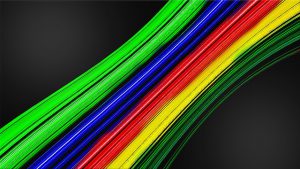28
Mallinson: 5G to eclipse but not remove fiber
Networks are built so, including substantial investments in numerous kinds of accessibility technology over wireless, copper and fiber connections. Wireless access is apparently on the ascendancy.
This could be a defining moment for 5G with possible technical and economical advantages in wireless through fiber for cellular accessibility in addition to repaired. Alphabet and Verizon have recently suggested that wireless can match the functionality of fiber for linking houses at lower price.
When consumer telecommunications was all about voice, copper wireline accessibility was initially the only game in town; yet, by the mid 1990s 2G wireless was decidedly more affordable to deploy for increasing teledensity in developing areas such Eastern Europe and later in the BRIC countries and their neighbors. Dialup modems on landlines brought Internet and e-mail access to the masses’ PCs while circuit-switched information and GPRS from around the turn of the millennium wasn’t up to rally for that. And cable and ADSL modems shortly made frozen broadband access with megabit per second speeds accessible to a substantial percentage of families. This revolutionized use of little apparatus while on the move but had minimal impact on utilization that was frozen.
Wireless was advancing but continued to be outpaced by developments in wireline access technologies while consumers needed -bandwidth- more hungry programs and services at home. Clearwire’s fixed-wireless service proposal with WiMAX around 2010 was not economically sustainable versus competing DSL and cable modem-based services. The business neglected with cellular and fixed users enduring inferior service quality from the network overload including major PC use. While DSL and cable modem services were seldom, if ever, limited in that manner restraining down to hundreds of kilobits per second was for given users specifically. A modest percentage of locations fiber, and in copper, continues nearly always to be used to link houses. That’s been required to meet conditions for high speed and significant use including SD and High Definition video streaming to PCs, TVs and tablet computers in addition to smartphones, even though Wifi is popular to link within the house.
Nevertheless, cellular wireless is catching up with fiber- speed capacities and the requirements for services used on reconditioned and well as mobile devices on it. That’s in reach for 5G. In the last few weeks, both Alphabet and Verizon have suggested that wireless connections to the curb can offer the functionality and the economics needed for continuing rollout of the maximum-rate capacities to the house. Verizon’s CEO Lowell McAdam has said that frozen deployment of 5G technologies ‘gives you all the yield on capital that you require.’ Likewise, the parent Alphabet of Google is looking to connect houses on the basis that Chairman Eric Schmidt says wireless technologies are more affordable than placing cables with various chances being investigated.
Fiber producers and trench-digging gear sellers will not need to worry about such developments. Fiber will continue to get -closer to most users, but typically it’ll only stop short of making the final link from the curb to the house. Propagation constraints with the centimeter and millimeter wavelength spectrum envisaged for increasing user requirements for information, together with 5G, mean that network antennas must be more numerous and closer to users.







There are no comments.